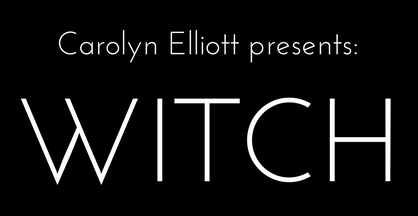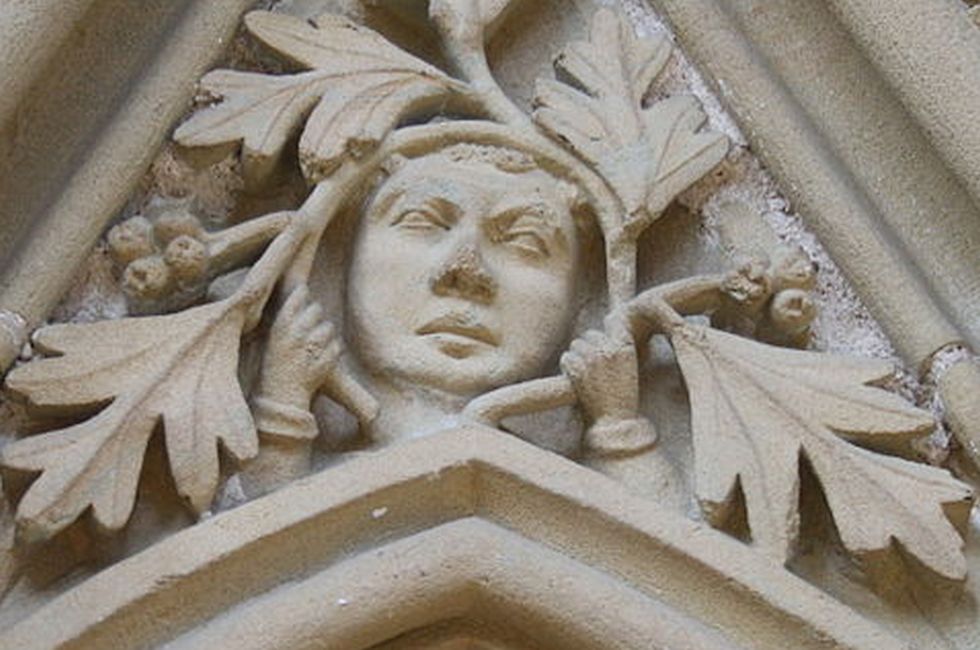by Chris Masters
Introduction
I discovered the Green Man about thirty years ago and have been telling myself to get on with the business of writing about him for at least half of that time.
It is not easy to kick yourself up the ass so a bit of gentle persuasion from the witches in my life has made it easier and Carolyn Elliot’s words are relevant.
I’ve eventually done what I said I would do primarily because I wanted to do it, and I’ve discovered the magic in it.
I’ve found some of the bizarre and weird sites and symbols that Kristen Lawson and Anneli Rufus talk about in Europe and I’ve also found that once you get into something that you believe is worthwhile then synchronicity comes into play and you may get support where you don’t necessarily expect it.
Andrei Burke’s article about David Lynch’s films, his stories and puzzles that have to be pondered in the solving, secret societies running shadow realities, the magic in the mundane, all of this resonates at some level with my journeys into the world of the Green Man.
This essay is also about how some women in the medieval world struggled with the power of the Church and how the Green Man eventually met the Green Woman.
She Devils and White Witches
The Green Man, a familiar figure of folk art to many of us, matured in the Medieval period.
Figures of fertility had existed long before this but they were usually female, and it was to be a long time before he rediscovered his partner. His concealment behind leaves reflected the attitude of a Church who were unsure of his relevance to their message.
In his early days, about eight hundred years ago, there were some brave and powerful women in Western Europe who were attempting to refine their culture. The Green Man can be seen as part of this movement to change social and sexual attitudes.
Male as he undoubtedly was, he nevertheless represented fecundity, for vegetation sprouted from his mouth.
Yet for the Church, women were to be valued for fertility, although as currency they needed to be untouched. Motherhood was fine, the pleasures of sex were not. As the Virgin Mother the female was divine, so long as she had only been touched by God.
How were women supposed to deal with this? Either they hid themselves away from the world and became the brides of Christ and cultivated a special relationship with him, or they had to evolve a different set of values and persuade their males to accept those values.
I will tell you a short story of Eleanor of Aquitaine, one of those powerful women I mentioned just now.
As a young woman she married the French king and they decided to go on Crusade together. The Crusades were by and large, a shameful part of Christian history, characterised by brutality, plunder, pillage and the abuse of the countries they passed through.
There was nothing admirable about the Holy Wars, then as now.
On her Crusade Eleanor found her husband deficient in certain aspects and took up with her uncle Raymond in Damascus, finding him an excellent tutor.
Her husband sent her home in disgrace and shortly afterwards divorced her, with the support of a Church which regarded her as a she devil, a bad witch.
For obvious political reasons but also because she found the young man compulsively attractive she married Henry Plantagenet, who gave her many sons.
She spent most of her life trying to stop them killing each other, was imprisoned from time to time by her husband Henry, and was expected to tolerate his infidelities, the most conspicuous of which was with the fair Rosamund.
During her long life she gathered powerful aristocratic women around her and they set up court with the purpose of teaching the knights the arts of love, introducing poetry, storytelling and flattery.
This was the birth of Romance in a western world habituated to bullying, misogyny and grabbing what you could get away with, including other people’s wives.
The members of Henry’s court were particularly advised to keep their wives and daughters out of his way.
In Eleanor’s courts one imagines the knights were happy to follow instructions if it gave them a better chance with women, as long as they could still do a bit of fighting, or choose to avoid it.
In the end Courtly Love was absorbed into French culture although those odd religious attitudes persisted and women like Joan of Arc were always vulnerable.
The male remained the warrior, women had to remain pure to be regarded as divine and for many hundreds of years the Kings believed they had a divine right to do anything and everything they felt like.
In a confused world where might was right the Green Man, both as a Pagan fertility symbol and an ecological example had a hard time, as did the women.
So, while the witches concocted their healing brews, another part of society cooked up reasons to persecute them for their wisdom and tie them to the ends of ducking stools, heat up their branding irons, or worse.
The luckier ones, the artists, the woodcarvers, the stonemasons sometimes reverted to Pagan images behind the backs of their sponsors, some of whom fortunately still harboured an appetite for the old signs and symbols like the Green Man.
For there was magic in it and whatever the progress of science to explain the inexplicable, magic remained at the edges of knowledge and stimulated the pursuit of it.
By the nineteenth century, a mere one hundred and fifty years ago, our world was becoming more literate, religious beliefs were subjected to the ideas of the geologists and the Darwinists. Science was liberating us from the Church.
As science has become the conventional belief, then along with religion, magic has been discredited. For some people science is magic, for others magic can reflect superstition.
We need to assess the truth behind all of this. I have found magic in medieval stone carvings like the Green Man. Let me give you two examples.
Many years ago, back in one of those French cathedrals, I encountered a series of carvings on the top of the columns at the back of the building which changed by degrees from vegetable forms to wicked little cats, themselves a Pagan form.
The subtlety of this was so fine, so beautifully expressed, that I’ve never forgotten it.
The message was suggestive of universal beliefs, that all things were one, stone, flesh, vegetation, all in the same realm, and available to the art and artifice of humankind.
I placed my hand on the point of transition where the columns changed and my energies were drawn up and down that column, connecting me simultaneously with the earth and the universe, above and below. This felt like magic.
Much more recently, in another French church, this time from the nineteenth century, I found a host of Green Men, an extraordinary variety lurking in the gloom.
But what was this among them? A female figure? Not effeminate, but not male either. The longer I looked, the more female she became.
This was a woman to be admired, a woman for the 20th or 21st century, an equal to the ecologist, the thinker, the prophet, maybe the farmer. At last, a Green Woman; too late, yet before her time.
This is an age of new found equality for many women, finally able to express themselves unhindered, spill forth ideas, knowledge and experience which has been suppressed for centuries, in all areas of life from the arts to the media and beyond.
The seeds of change which Eleanor of Aquitaine and other powerful women have sown, which have slowly grown, enduring throughout time, waiting for the right conditions to take root and flourish, are now blossoming into the tree.
The foliage of the Green Man is the power of nature and our connection to it which cannot be repressed by either state, religion or individual, just like the power of the feminine.
So the time is ripe for the Green Woman, both in image and action.
About the Author:
They can be found on www.kindredspirit.co.uk
Images: if not attributed otherwise, Author’s own, feat. image: source


